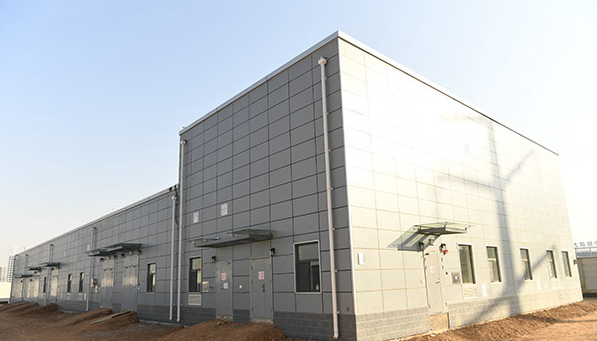Qinghai's Efforts to Achieve Zero-carbon Goal

A view of the 110 kV Guyi Substation at the Qinghai Zero-carbon Industrial Park. (Photo by Li Yongpeng/For S&T Daily)
By ZHANG Yun & CHEN Chunyou
In 2021, Qinghai province decided to build a zero-carbon industrial park with Pingbei Economic Zone in Haidong city as the pilot area, which has paved the way for the sustainable development of its new energy industry.
With an area of 22.09 square kilometers, the Qinghai Zero-carbon Industrial Park plans to form three industrial clusters, namely lithium battery, new energy equipment and animal husbandry, and build related service industries to support the development of these low-carbon industries.
In the computer room of China Telecom (National) Digital Qinghai New Big Data Center, based in the park, rows of standard cabinets provide cloud network services, such as equipment hosting and Internet access for enterprises across Qinghai province and beyond.
Having an estimated investment of one billion RMB and covering an area of 100 mu (6.67 hectares), the center is home to 9,000 standard cabinets. Its operation further strengthens the park's ability to offer digital services and develop digital economies.
Relying on Qinghai's advantages in developing the clean energy industry, the carbon emissions from the whole life cycle of the park, such as construction, operation, maintenance and demolition, could be reduced by building a closed-loop control system of "net zero carbon" and the supply system of "all green electricity".
Now, industrial energy consumption accounts for more than 70 percent of Qinghai's total energy consumption, making the control and reduction of carbon emissions from all types of industrial parks a viable path to low-carbon development.
The first 110 kV green electricity demonstration project, 110 kV Guyi Substation in this park began on November 27, 2021, and was put into operation on December 27, 2022. It has further optimized the 110 kV grid structure of the park, and improved the reliability and quality of power supply. It is expected to produce 700 million to one billion kWh of green electricity for the park annually, meeting its new load power demand.
To offer a stable 24/7 supply of electricity, the digital twin technology was also used in Guyi substation to reduce energy consumption.
This project recently realized intelligent holographic sensing, which is a breakthrough in transforming the operation and maintenance management of the substation from a traditional mode, to an intensive and digital one.







